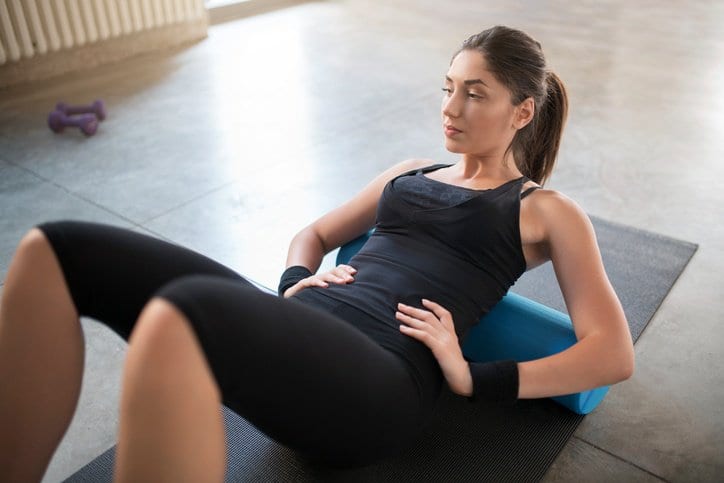Clean 21: 21 Day Detox
Our Signature 21-Day Full-Body Reset
Questions? Ask about this product
Free Shipping On Orders Over $50
Complementary products


We all know stretching is important to keeping our muscles healthy, strong, and flexible. However, it’s not the only thing we should be doing before and after each workout. Foam rolling is a type of self-massage using a lightweight piece of dense, cylindrical foam, which helps loosen sore muscles and tight joints, and aids in muscle recovery.
If you’ve ever been to a gym, physical therapy, or even the fitness aisle at Target, you’ve probably seen foam rollers amongst the yoga mats and hand weights. Though once a mysterious technique reserved for professional athletes, foam rolling is becoming a familiar practice for everyday gym-goers at all fitness levels.
Foam rolling is a form of myofascial release. Fascia or myofascia is the tissue that covers all of our muscles and bones. The best way to describe it is like a complete body suit that extends from the tops of our heads to the tips of our toes. Under a microscope, myofascia looks like a spider web or fish net. When healthy, our myofascia is relaxed, soft, and flexible. If our fascia is damaged due to overtraining, poor posture, or stress, it can become tight and inflamed. Damaged fascia can cause a number of problems in our bodies, including headache, back and neck pain, and recurring injuries.
Deep tissue massage is a common form of myofascial release. If you’ve ever heard your therapist say you have “knots” in your muscles, she’s referring to myofascial trigger points – small fibers of hyper-tensed muscle that have clumped together. These spots are painful because they inhibit blood flow to the affected tissue. Since getting a massage before and after every workout isn’t realistic for most of us, the next best thing is to apply pressure to these affected areas with a foam roller. We highly recommend following a session of foam rolling with some magnesium citrate, like our Eliminate, as it can help muscle tension and cramps as well.
The main goals of foam rolling are to relax tight fascia, break up trigger points, and increase blood flow. Specifically, here are a few ways this form of self-myofascial release benefits the entire body.
When the fascia surrounding our muscles and joints becomes tight, it restricts our range of motion. Applying intense pressure to these areas through foam rolling breaks up the tension and improves our flexibility before and after a workout.
There’s a reason we feel blissed out after a great massage or an amazing yoga class. Myofascial release through foam rolling has been shown to calm the nervous system, targeting acupressure points that are connected to the adrenals. Plus, creating elasticity and length in the muscles can help deepen the breath, which creates a sense of calmness in the body.
After a strenuous workout, lactic acid builds up in the muscles and can result in pain and stiffness. Typically, the symptoms set in 24-48 hours after an intense workout. Foam rolling after Activity breaks down this lactic acid to speed up your recovery time and keep you free of aches post-spin class.
When the fascia is tight, creating those “knots” we mentioned earlier, it decreases blood flow to the surrounding tissue. Using a foam roller to break up these tight areas not only alleviates the pain and discomfort these trigger points cause, it improves our circulation, which is crucial to overall good health.
As they say, “Prevention is the best medicine.” Using a foam roller before and after each workout heightens our awareness to tight muscles. “Rolling out” with a foam roller allows us to loosen up, increase flexibility, and improve blood flow to these areas before an injury happens.
THE TECHNIQUE
Using our own body weight, foam rolling allows us to dig deep into tight, inflamed tissue. With the foam roller beneath you, roll back and forth on the muscle group you’re targeting for 30 seconds to a minute, spending extra time on trigger points. We should be targeting our hip flexors, IT band, hamstrings, glutes, calves, upper back, lats, and chest before and after each workout.
This foam rolling infographic demonstrates the proper way to “roll out” each area. All together, foam rolling only takes up 10-15 minutes of our day – and the benefits will last a lifetime. This is a healthy habit you can incorporate right before or after your vitamin-packed Daily Shake and you will start seeing results shortly in how your body feels!
Written by Kate Kasbee